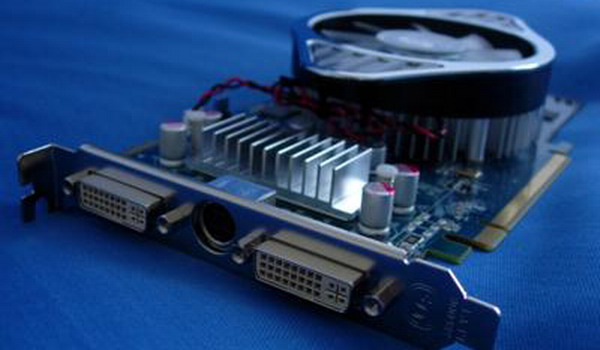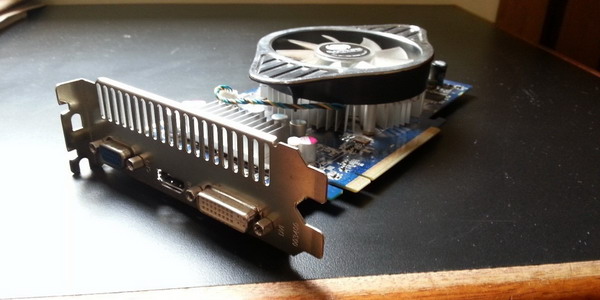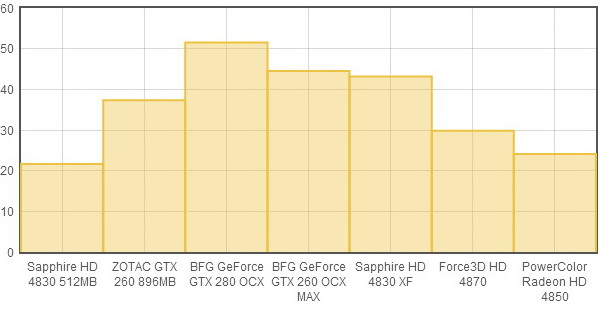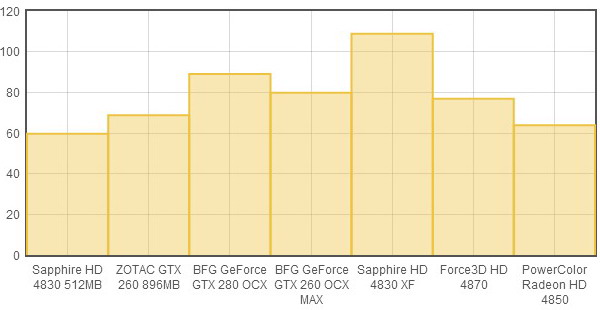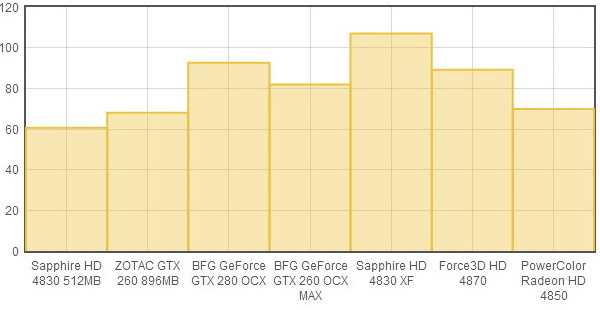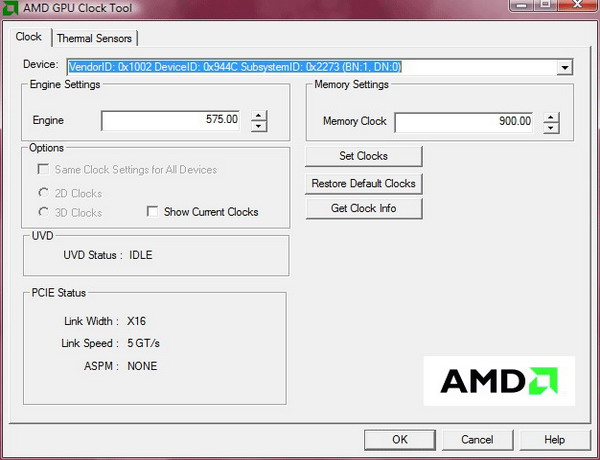
Sapphire Radeon HD 4830 512MB
Hardware 0 CommentsIntroduction
The state of graphics hardware is often predictable. A new generation of chipset is made, it’s faster, it subsequently is improved, and more variation comes out of it. Older hardware is pushed aside, sometimes unnecessarily, but gains appeal through price drops. Saying that the last year or so of developments hasn’t been entertaining is wrong, but it’s not taking a new turn. It’s just happening ridiculously fast.
This year’s video card harvest was massive. Lots of new cards, lots of old cards with a fresh sticker, but most impressively, the bang-for-buck has basically tripled. It’s that everything’s a great deal–although the HD 4830 may be a little greater than the rest.
The ’30 is, deceptively, a broken card. It’s got the same 4800 core we’ve come to all love, maybe a little too much, but with some flaw preventing all 800 stream processors to work. Cooler heads prevailing, ATI designed the chip to allow for some chunk of the core to be disabled, leaving the remaining 640 kicking hard.
This strategy is paying off. You make one chip and get, like, seven video cards from it: the slower glass goes into 4850s, a competitive if standard part, the faster glass gets extra bandwidth and fast memory, and becomes a 4870, with both of these also in X2 and 1GB configurations. The broken ones? You’d be hard-pressed to tell that there was a damn thing wrong in the first place, ’cause these cards are solid.
The Card & Bundle
I don’t think there’s a "stock" 4830. Sapphire usually runs that route with the non-Toxic or their other variants, but I’m pretty sure that it’s up to the board partner to build a better 4830; they’re all different. Each has its own heatsink and board layout. Sapphire’s is, at least, true to the namesake, and mega-blue.
Sapphire’s looks backwards to me, with the power regulation hardware under a heatsink at the back of the card opposite the auxiliary power connector. It’s a simple little aluminum bit, more or less a beefy heatspreader. The GPU has another simple aluminum heatsink, radial and not unlike a stock Intel CPU heatsink, except that it has that black plastic winged (read that as "wing-ed", FYI) bevel, that I think looks like a Chinese horsehair cap, but whatever, it does the job, you’ll see, impressively. The GPU heatsink is dual-slot, which probably keeps costs down; you can obviously get away with a smaller cooler, but then it’d be made of copper, and I think most people would rather have the card and save some scratch. All the 4830s that I’ve seen have similar dual-slot aluminum cooling, so I think that the low-cost approach is persuasive.
Yeah, it’s got a bundle, video-out adapters, an HDMI adapter, an install CD, and all in a nicely compact package. I like a massive box full of foam as much as the next guy, but hey, we’re supposed to be green and junk. It’s like having a little hybrid inside your computer, so at least you’ve got something to brag about.
Specifications and Setup
In this review, we’ll be comparing the Sapphire Radeon HD 4830 to:
- A Sapphire Radeon HD 4670
- A Sapphire Radeon HD 4850 Toxic
- A Chaintech GeForce 9600 GT
- A ZOTAC GeForce 9800 GT AMP!
Test Computer Specifications
- Intel Core 2 Duo E8400 3GHz
- Asus Rampage Formula (Sponsored by Asus)
- 2GB Crucial Ballistix Tracer DDR2 800 @ 4-4-4-12 (Sponsored by Crucial)
- Thermaltake Toughpower 1000 (Sponsored by Thermaltake)
- Windows Vista Ultimate x64 (Sponsored by Microsoft)
Video Card Specifications
- GDDR3 memory 256-bit memory interface
- DirectX 10.1
- 24x custom filter anti-aliasing (CFAA) and high performance anisotropic filtering
- ATI CrossFireX multi-GPU support for highly scalable performance
- Use up to four discrete cards with an AMD 790FX based motherboard
- PCI Express 2.0 support
- Dynamic geometry acceleration
- Game physics processing capability
- ATI Avivo HD video and display technologyUnified Video Decoder 2 (UVD) for Blu-ray� and HD VideoBuilt-in
- HDMI with 7.1 surround sound supportOn-chip HDCP
- ATI PowerPlay technology
- I/O Output: Dual DL-DVI-I+HDTV
- Core Clock: 575 MHz
- Memory Clock: 900MHz, 1800 Mbps.
- PCI Express 2.0 x16 bus interface
- 512MB /256bit GDDR3 memory interface
- Dual Slot Active Cooler
- HDMI compliant via dongle
- 7.1 Audio Channel Support
- Microsoft DirectX 10.1 support
- Shader Model 4.1 support
DirectX 10 Titles
Company of Heroes: Opposing Fronts DX10
Call of Duty 4: Modern Warfare
Enemy Territory: Quake Wars
Race Driver: GRID
Performance Notes
The HD 4830 is approximately priced between the 9600 and 9800 GTs, and the performance splits the difference. It does exceptionally well at 1440×900, but with these DirectX 10 titles, 1680×1050 antialiasing performance drops. That said, it’s nowhere near unplayable and it performs about an order of magnitude better than the next ATI step down, the 4670. It’s also startlingly close, results-wise, to the overclocked 4850.
DX9, OpenGL, and Synthetics
Performance Notes
DirectX 9 and synthetic score put this card right there with its price: ahead of the 4670 and 9600 GT, behind the 9800 GT and 4850.
Video, Power, and Overclocking
ATI, always a little ahead of NVIDIA with these generations of video cards, delivers a slightly better HQV score. I do notice the moire, but it only lasts a split-second and only after skipping around in the video stream. The rest is picture-perfect.
Another no-surprises test, the power consumption is a little on the high side, but not higher than the faster cards in this comparison. I think the performance trade-off is worth it, seeing how at the very worst, you’re using 40 more watts than the much slower 4670.
The cooling does its part really well, keeping the core or below 50 degrees at idle and under 70 degrees under load. This might sound high, but all the HD 4800s run warm, and this is chilly by comparison. The fan doesn’t slow down to the point where it’s ever inaudible but it’s a lot quieter than a 4850 under load, and despite its looks, actually impresses me all-around.
And the cooling really shows its merits here. A 20% overclock on the core, and a 30% memory overclock. This did work out to be about a 15-25% improvement over its stock scores, and single-handedly earns this card my endorsement. A 25% overclock on a stock video card without zealous cooling? This one’s easy to recommend.
Conclusion
Priced where this card is, with its, ah, "bombastic" overclocking, this card is a solid buy for any and all budget gamers. You can easily strap this onto an all-AMD PC and get your holiday gaming on, graphics on high, for a short stack of Benjamins. This card even begs the question, is it worth going after a 4850 or 9800 GTX? Well, of course it is, but if you’ve got to make every dollar count, this card’s practically irresistible.
The other ATI card this pressures is the HD 4670, whose only merit is low power consumption. But really, it’s not that much hungrier or costlier, and it does a fine job of putting NVIDIAs 9600s in their place.
I kind of wish that I was putting together a budget PC myself so I could run out and stick one of these 4830s in there. Or two, even, the price is so right.

